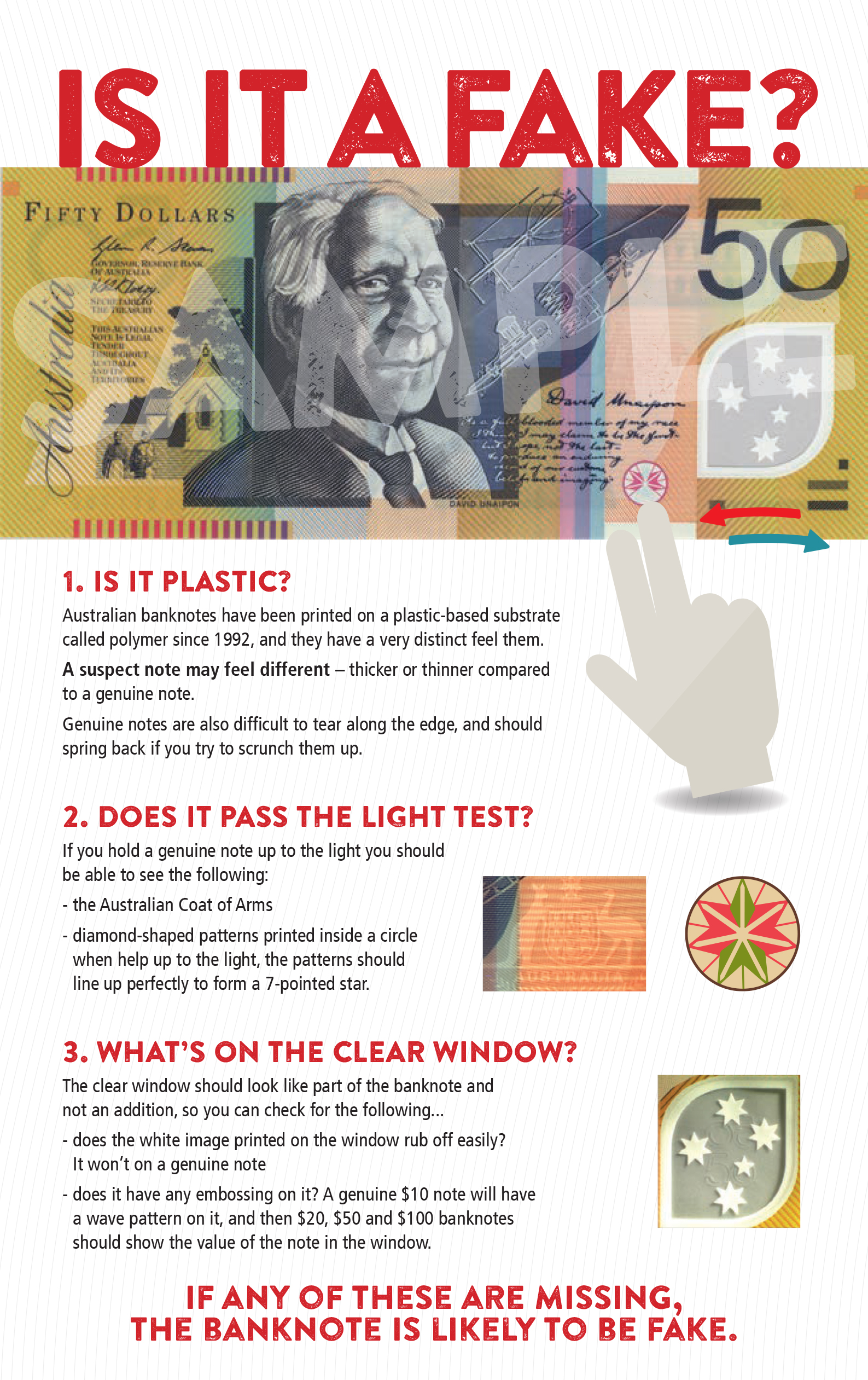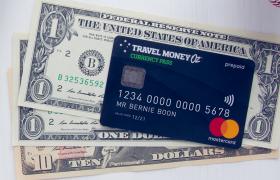Quick Contact

18th July 2017
Spotting Counterfeit Money
Currently, there are about 1.5 billion Australian banknotes in circulation around the country, worth almost $73 billion. These banknotes are armed with many features designed to combat counterfeiting attempts, but do you know what they are? Would you be able to spot a fake banknote against a real one?
Counterfeiting currency is an offence under the Crimes (Currency) Act 1981, and offenders can face penalties of up to 14 years' jail. And unfortunately, those people that fall victim to this crime are essentially being robbed - they cannot be reimbursed for those counterfeit notes once they have been handed over to the State or Federal Police.
Given all of this, we think it's super important for you to know how to spot a fake note so that you can protect yourself from falling victim to this crime.
Sound good to you? Ok, here's how you can spot a fake Australian banknote.
How to Detect a Counterfeit Aussie Banknote
Additional Checks To See if it’s a Fake Note
These are the main security features you can check, but there are a few others you can add to the mix just to be sure:
-
Dark printing
Genuine banknotes are produced with a special raised ink that you can feel with your finger. If you can't feel this, the note may be suspect
-
Print quality
The background printing on a real note should be sharp, so you can check for any irregularities in the printing, like less clearly defined patterns, thicker or thinner lines or colour differences
-
Microprinting
On a genuine note you should be able to see tiny, clearly defined words with a magnifying glass. These would be on the top left corner of a $5 note, and near the portraits on the other notes
-
UV light
If you hold the note under a UV light, the serial numbers and a patch on the notes that shows their value should fluoresce - the rest of the note shouldn't
Common Myths
There are also few myths out there about how to spot a fake banknote, so we wanted to clear these up for you too.
Myth #1 Notes Without the Name Printed Below the Portrait are Counterfeit.
That is not necessarily true. The names of the people in the portraits were only added to the banknotes printed from 2002 and onwards, so anything printed prior to this may not have this feature. You can see the year the note was printed in the serial number - the first two digits represent the print year. For example, 99 is a note printed in 1999, and 03 is a note printed in 2003.
Myth #2 The Governor's Signature Always Appears Above the Signature of the Secretary to the Treasury.
Again, this is not always the case, as the order of the signatures changed in 2002, so some notes may have them in a different order to others.
Now that you know the myths versus the facts and what security features to check, if you do happen to spot a fake Australian banknote, you do have the right to refuse to accept it. But if some do come into your possession, you should try not to handle them too much and store the notes in an envelope; make a note of any relevant information (like how the notes came into your possession) and then report it to the State or Federal Police.
If the notes turn out to be genuine, you will be reimbursed their full value. But unfortunately if they are fake, you'll lose out on that money. Hopefully, these tips on how to spot a fake banknote will prevent it from getting that far.
Travel Money Oz are the FXperts and are ready to help you take off with more travel money. Click here to find your nearest store and to talk to a FXpert today.
Currency and Counterfeiting statistics and information taken from the website of the Reserve Bank of Australia: https://www.rba.gov.au/publications/bulletin/2017/mar/8.html and http://banknotes.rba.gov.au/assets/pdf/counterfeit-detection-guide.pdf. This blog is provided for information only and does not take into consideration your objectives, financial situation or needs. You should consider whether the information and suggestions contained in any blog entry are appropriate for you, having regard to your own objectives, financial situation and needs. While we take reasonable care in providing the blog, we give no warranties or representations that it is complete or accurate, or is appropriate for you. We are not liable for any loss caused, whether due to negligence or otherwise, arising from use of, or reliance on, the information and/or suggestions contained in this blog.












